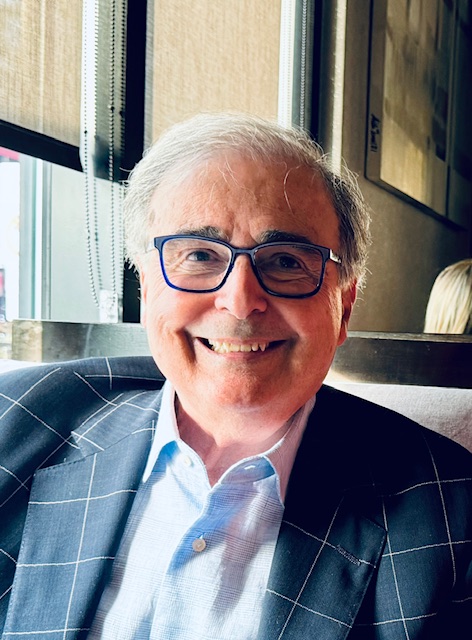INTERVIEWS


Matthew Runci is a specialist in responsible minerals sourcing, corporate social responsibility, reputation management and public affairs.
Prior to his retirement Matt was CEO of Jewellers of America (JA), the world’s largest trade association in the jewellery and gemstone industries, for nearly 20 years. In this role, he was accountable to the board of directors for all aspects of the organisation’s affairs, while directly managing its work in the areas of strategic planning and public affairs, including government relations, industry relations and outside stakeholder engagement.
He was a key member of the industry team working for the establishment of The Kimberley Process, serving as chief media spokesperson for the diamond and jewellery industries worldwide.
Matt also facilitated the founding in 2005 of a global multi-stakeholder organisation, the Responsible Jewellery Council, based in London, whose purpose is to establish and maintain verifiable standards for businesses in the jewellery supply chain from mining through retail, serving as chair of the board of directors of this organisation for seven years from its founding until his retirement from the industry.
I remember very clearly a series of events that eventually led to the formation of the RJC. To be clear, in the early stages there was not even a vague idea that a new organisation would be created. With the launch of the Kimberley Process, a trading scheme for rough diamonds built on collaboration between governments, industry and civil society, the hope was that the trade in blood diamonds would be curbed. Yet leading retail jewellers in the United States continued to ask what other risks might exist within the supply chain, not just for diamonds, but also for gold, other precious metals and coloured gemstones.
Jewellers of America commissioned a risk assessment conducted by PwC, a leading global firm based in London. The findings revealed risk across all sectors and at multiple levels. The JA board of directors authorised me, as CEO, to engage major corporations across each sector, share the results and request feedback. In nearly every case, business leaders indicated that they were already engaged in some form of self-assessment, and some were even working on their own codes of practice with measurable standards. However, while this work progressed, it was widely recognised that the risks to public confidence affected the entire industry and were therefore beyond the capacity of any single company to manage alone. In short, no firm could fully safeguard its reputation if consumer trust in the sector began to erode.
Moreover, there was broad consensus that a patchwork of individual and potentially competing codes would only confuse consumers and place an undue burden on businesses operating in the middle of the supply chain.
At a special meeting convened by Jewellers of America in London, attended by key organisations from the diamond, jewellery and gold sectors, it was agreed to fund, on an interim basis, the design and launch of a new organisation. Its purpose would be to create an industry-wide code of practices, with standards applicable across all levels of the supply chain and multiple sectors. Crucially, these standards needed to be independently verifiable.
A volunteer working group began collaborating with consultants to draft a template for what would become the RJC. After six months of intense work, the RJC was incorporated with its headquarters in London. I was asked to chair the board of directors of the new organisation, with the first task being to appoint a highly qualified CEO who would go on to build a professional team. Meanwhile, the development of the standards continued.
When the RJC was founded, I can say with certainty that no one anticipated the scale it would ultimately achieve. While the vision from the outset was global, our immediate focus was on addressing each challenge as it arose.
And there were many. The concept of a new organisation met with resistance. For businesses, paying for membership and verification meant additional costs with no guaranteed return, particularly in the early days. Only a few were willing to be early adopters, while most preferred to observe from the sidelines.
Some existing trade bodies viewed the RJC as a potential rival, even though none were directly tackling the same set of industry-wide risks. Because initial financial support came primarily from larger firms, smaller businesses also expressed concerns that their interests might not be adequately represented. Some feared that any gains would come at the expense of others.
However, the RJC was firmly committed to addressing the needs of the entire industry. From the beginning, it was clear that unless we developed a set of standards and verification procedures that were practical and accessible to any company, the organisation would not succeed. That goal kept us going.
Yes, there certainly are. In the life of any organisation, there are key moments that mark a shift in trajectory. From my perspective, one of the earliest was securing the initial commitment to explore the feasibility of creating a new body. Appointing a CEO, which allowed me to return to my role representing Jewellers of America and chair the RJC board, was also essential.
Another turning point was raising awareness of the RJC’s value among companies that were not consumer-facing and often had limited visibility into their own supply chains. Expanding beyond diamonds to include precious metals and coloured gemstones was another major milestone. These moves brought new stakeholders into the fold and reignited discussions around shared challenges and differing approaches.
Although I am now far removed from the industry, I still firmly believe that maintaining the trust of both business partners and consumers is essential. This is an industry that offers not only products but emotional significance. Transparency is the foundation of that trust.
The RJC has been, and must continue to be, the key driver of efforts to uphold that trust. I wish you heartfelt congratulations on your first twenty years.